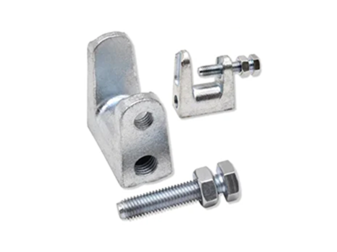Kas . 10, 2024 04:39 Back to list
Left-Hand Threaded Rod Applications and Benefits in Engineering Design
Understanding Left-Hand Threaded Rods Applications and Benefits
In the world of fasteners and mechanical components, understanding the various types of threaded rods is essential for engineers, machinists, and DIY enthusiasts alike. One lesser-known type is the left-hand threaded rod, which, despite its niche applications, plays a crucial role in many projects and industries. This article delves into the fundamentals of left-hand threaded rods, their uses, benefits, and unique characteristics.
What is a Left-Hand Threaded Rod?
A left-hand threaded rod is a metal rod that has threads designed to tighten in the counterclockwise direction, as opposed to the more commonly used right-hand threaded rods. This means that to tighten a left-hand threaded rod, you must turn it to the left. Conversely, loosening the rod requires a rightward twist. The designation of left-hand or right-hand refers to the direction of the thread spiral when viewed from the end of the rod.
Applications of Left-Hand Threaded Rods
Left-hand threaded rods are used in various applications, particularly where rotational forces can lead to unintentional loosening of conventional fasteners. Here are some key areas where left-hand threaded rods are commonly employed
1. Mechanical Assemblies In some mechanical assemblies where two components are designed to rotate against each other, a left-hand threaded rod can help secure them in place. One component will be under tension from rotation, and a left-hand threaded rod will counteract this motion by remaining securely in place.
2. Automotive Industry Left-hand threaded rods are often used in the automotive sector. For instance, in certain tire assembly processes or within specific suspension systems, these rods prevent the unintentional loosening of bolts while the vehicle is in motion, as the rotational movement naturally tends to tighten the left-hand threads.
3. Bicycles Many bicycles employ left-hand threaded components, particularly in the pedals or crank arms. The left pedal typically has a left-hand thread to prevent it from loosening when pedaling, as the pedaling motion turns the left pedal in the same direction that would normally loosen a right-hand thread.
4. Machinery and Equipment Industrial machinery can incorporate left-hand threaded rods to mitigate the risk of loosening due to heavy vibrations or operational stress. In equipment such as lathes and milling machines, these rods can help maintain the stability of machine components.
left hand threaded rod

5. Safety Applications Left-hand threaded rods are also utilized in safety-critical applications. For example, in certain safety devices or guards, employing left-hand threads ensures that the components remain securely attached, even under force.
Benefits of Using Left-Hand Threaded Rods
The use of left-hand threaded rods provides several advantages
1. Prevention of Unintentional Loosening By design, left-hand threads remain tight under conditions that would typically loosen a right-hand thread. This characteristic is invaluable in environments where vibration and rotation are prevalent.
2. Ease of Installation For applications specifically designed for left-hand threads, using the correct rod simplifies the installation process. It eliminates confusion and ensures components fit together as intended.
3. Increased Stability Left-hand threaded rods contribute to the overall stability of assemblies subject to dynamic forces. Their secure fit means less risk of failure, which is particularly important in safety-sensitive applications.
4. Availability and Variability Left-hand threaded rods are available in various materials, sizes, and lengths, making them tailored to industry-specific needs. From heavy-duty steel rods for industrial machinery to lightweight aluminum variants for bicycles, there are options to suit a wide range of applications.
Conclusion
While left-hand threaded rods might not be as commonly discussed as their right-hand counterparts, their significance in various industries cannot be overstated. They provide unique solutions to specific challenges, particularly in preventing loosening where conventional methods might fail. Understanding their applications and benefits allows engineers and technicians to design more reliable and efficient systems, ultimately enhancing performance and safety across a multitude of applications. Whether you’re an industry professional or a DIY enthusiast, familiarity with left-hand threaded rods is a valuable aspect of the broader landscape of mechanical engineering and fastener applications.


